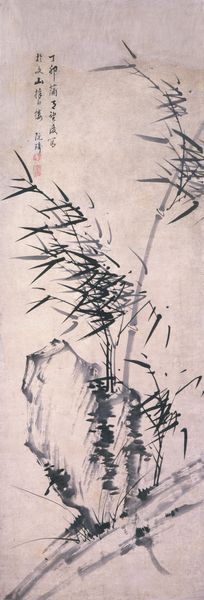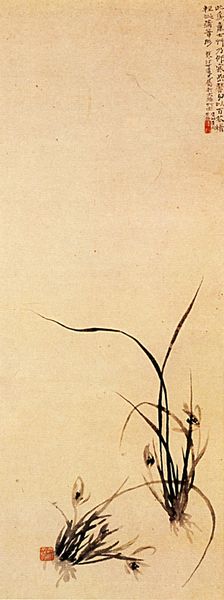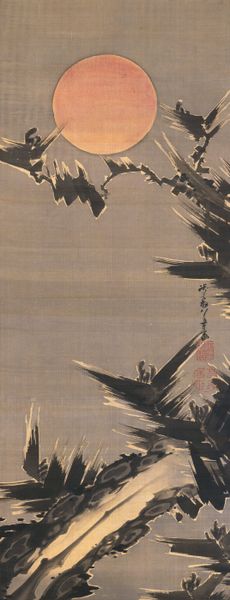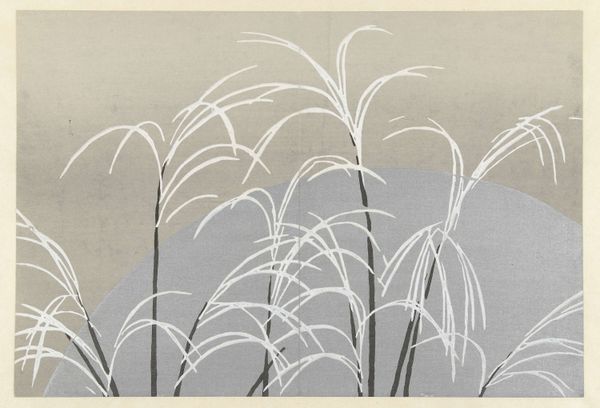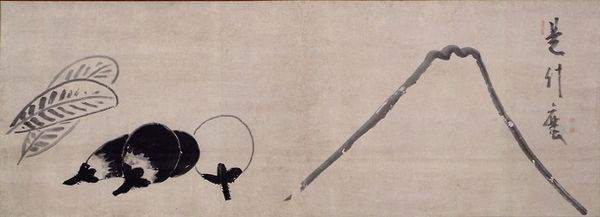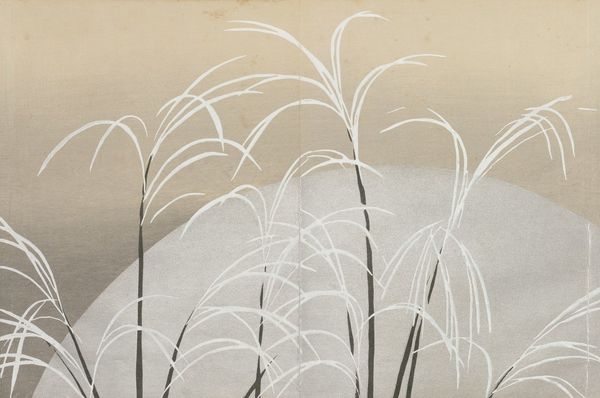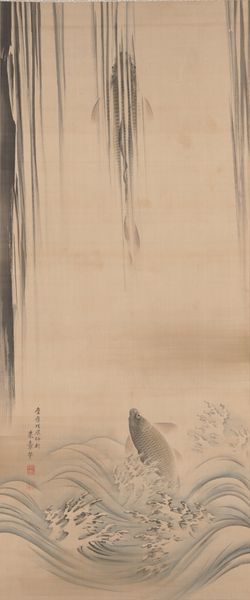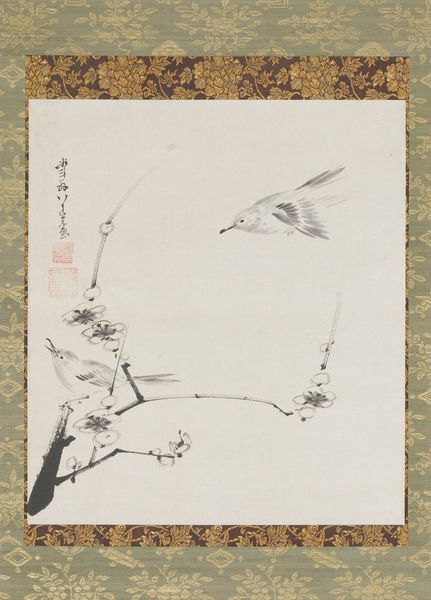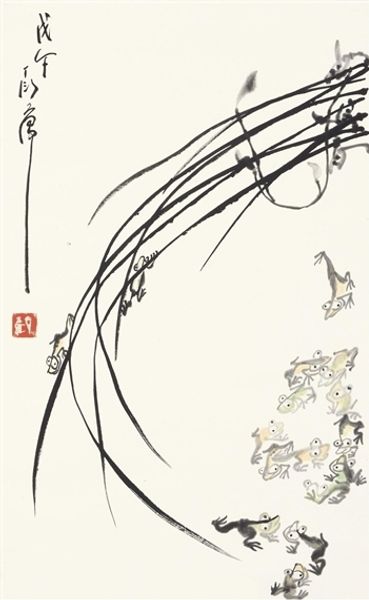
painting, paper, ink-on-paper, hanging-scroll, ink
#
painting
#
asian-art
#
landscape
#
ukiyo-e
#
japan
#
paper
#
ink-on-paper
#
hanging-scroll
#
ink
#
orientalism
#
line
#
watercolor
Dimensions: 49 3/4 × 11 7/8 in. (126.37 × 30.16 cm) (image)82 5/8 × 17 in. (209.87 × 43.18 cm) (mount, without roller)
Copyright: Public Domain
Curator: Here we have "Autumn Grasses and Moon," an ink-on-paper hanging scroll from the early 19th century by Sakai Hoitsu. It’s currently held here at the Minneapolis Institute of Art. Editor: The simplicity is really striking. It evokes a sense of stillness and melancholy— a lone, contemplative moment suspended in time. It makes me reflect on the cyclical nature of life and the transience of beauty. Curator: Ukiyo-e traditions valued capturing these transient moments, emphasizing emotion and atmosphere. Hoitsu’s style draws heavily from the Rinpa school, characterized by decorative and naturalistic scenes. He was crucial in revitalizing this artistic movement. What statements do you think the style is making in that social context? Editor: I would argue the composition suggests the privileged detachment that artists and patrons of the time experienced—even encouraged. I'm interested in the social narrative here: who would commission or own a piece like this and what that said about them? This stylized simplification arguably served to romanticize nature, obscuring realities that other populations faced. It represents a particular cultural moment, where idealized views and constructed meanings influenced aesthetics. Curator: Interesting. Let’s delve deeper into the imagery itself. Note how the large moon almost entirely dominates the composition, behind a few elegantly rendered stalks of grass and foliage. How does the strategic emptiness of the pictorial field guide your experience? Editor: It really pushes us to contemplate what is present and what is deliberately absent. But for whom does this absence hold the same potential? Whose histories and narratives have been equally 'erased' in service to aesthetic purity? Curator: So, in the end, it becomes another reminder that even the simplest image carries a weight of socio-political complexity, and viewing becomes a negotiation between the seen and the unseen. Editor: Precisely. We can acknowledge the aesthetic achievement of “Autumn Grasses and Moon,” while pushing for discussions of the cultural and societal norms in which these works originated and which they, consciously or not, propagate.
Comments
No comments
Be the first to comment and join the conversation on the ultimate creative platform.

